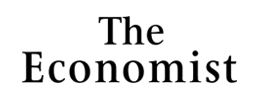Related

Last week at the Urbanization Project, we had the pleasure of meeting Dr. Eric Sanderson, a landscape ecologist and geographic analyst for the Wildlife Conservation Society. Sanderson and the Urbanization Project both study the fringe areas of cities. As urban planners, we look at the inside of the urban boundary, studying how urban expansion is affecting cities. Sanderson focuses on the outside, studying how urbanization impacts natural systems.
Sanderson is also the innovator behind the Mannahatta Project, an exercise in ecological archaeology that reconstructed a map of Manhattan Island as it was in 1609 - the year Europeans first settled, four hundred years before the project was completed in 2009. Sanderson’s latest project, Mannahatta 2409, brings long-term inclusive planning to the challenge of predicting how Manhattan could look in the future, based on user-created visions. At the same time, it merges the interests of the people living inside the urban boundary and the natural systems surrounding it.
The Mannahatta Project map of 1609 shows a lost world of hills, waterways, and small Lenape settlements - replaced today with buildings, storm drains, and landfill. Mannahatta 2409’s map shows a dramatically changed island of Manhattan from the one we know today, based on projections of inundation zones in 2020, 2050, and 2080. The filled areas and waterways have been largely reclaimed by the sea and the boundaries of the island have been restored to roughly the same place as in 1609.
The website lets you see an overlay of the existing land uses in the city, and modify them based on options from a toolbox. You can add a streetcar system, for example, or extend a subway line, or ban automobiles, or eliminate buildings entirely, or add green roofs. It then gives you a series of outputs, measuring the impact of your actions on metrics such as Carbon Footprint, Population, or Stormwater Runoff.
Results are compared to 2010, to the “business as usual” scenario for your chosen vision year, and to 1609, when Manhattan was virgin forest and estuaries. You have control of the city “ecosystem,” along with the lifestyle of your inhabitants (my favorite lifestyle option was “Eco Hipster,” which more or less describes my anti-corporate, bike-to-work, make-my-own-pickles ethos). The results can be run through a variety of different climate and population scenarios.
This collaborative planning technology will encourage citizens to take issues of climate change and population growth more seriously, and, much like the New York Times “Budget Puzzle,” which invited users to solve the budget deficit, will engage people in a realistic planning exercise. The solutions that citizens come up with through Manhattan 2409 will never be pasted into the city’s master plan, but getting citizens to seriously consider tradeoffs and options will give policymakers more latitude in proposing the sorts of broad, technically challenging solutions that will be necessary to address the challenges of the future.
Tile image courtesy of NASA.
Please fill out the information below to receive our e-newsletter(s).
*Indicates required.